Is There A Sequel To Kenji World's Mightiest Disciple Anime
The earth's fastest animals
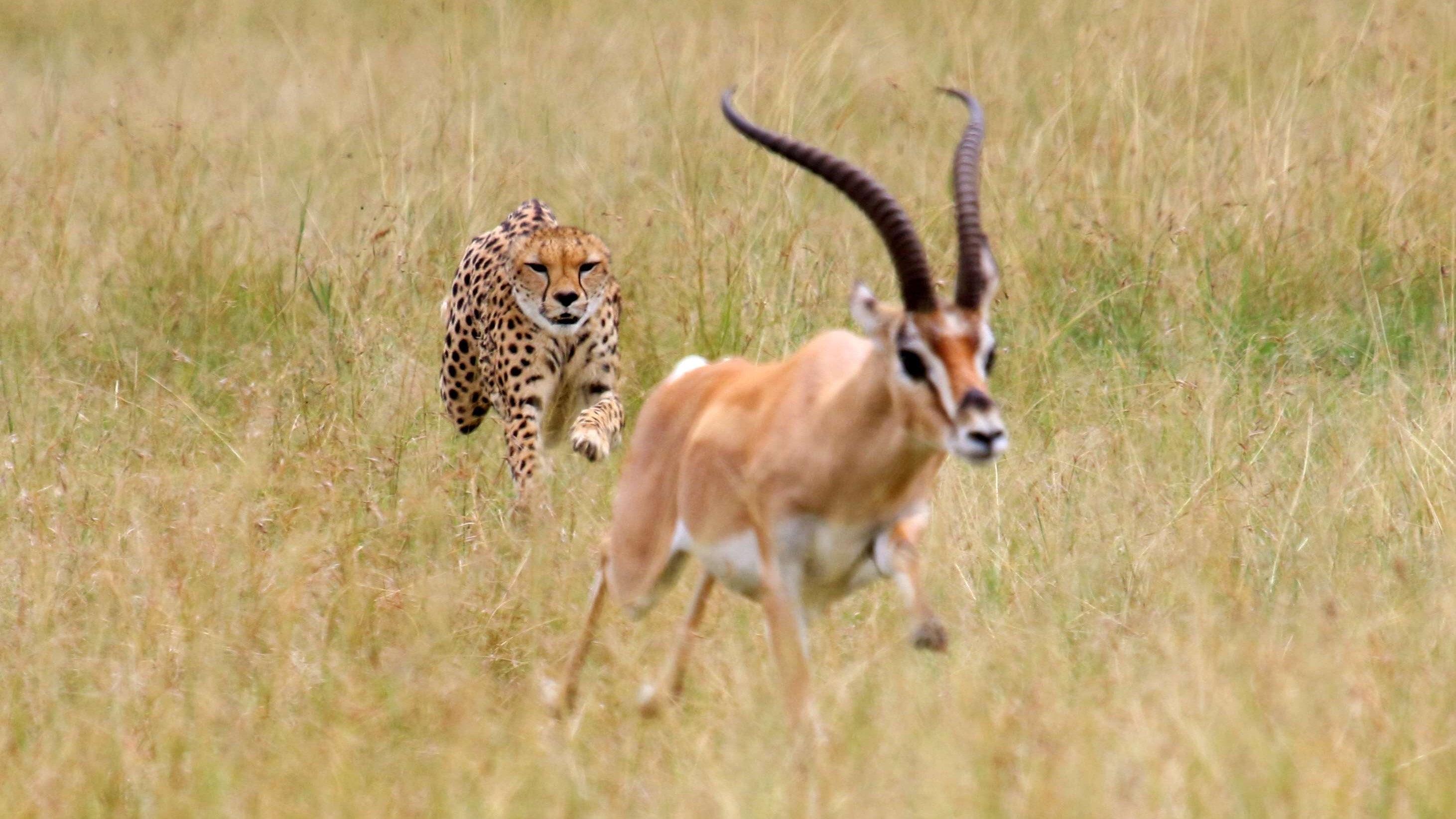
The fastest animals use speed to survive and thrive in the wild, swiftly chasing down casualty or escaping from predators. These tape-breaking speedsters are found all over the world and across the animal kingdom, whether they are running on land, swimming in water or flight in the sky. Below are ix of the fastest animals alive today.
Although they would smoke their human being counterparts, wild animals don't take part in any Olympic races, so scientists oftentimes have to venture into the creatures' natural habitats to find out how fast they can move. And considering animals don't necessarily travel at their fastest possible speed when humans happen to be measuring them, many of the speeds on this listing are estimates — the animals could be even faster.
Fastest animals on state
Ostrich: 43 mph (70 km/h)
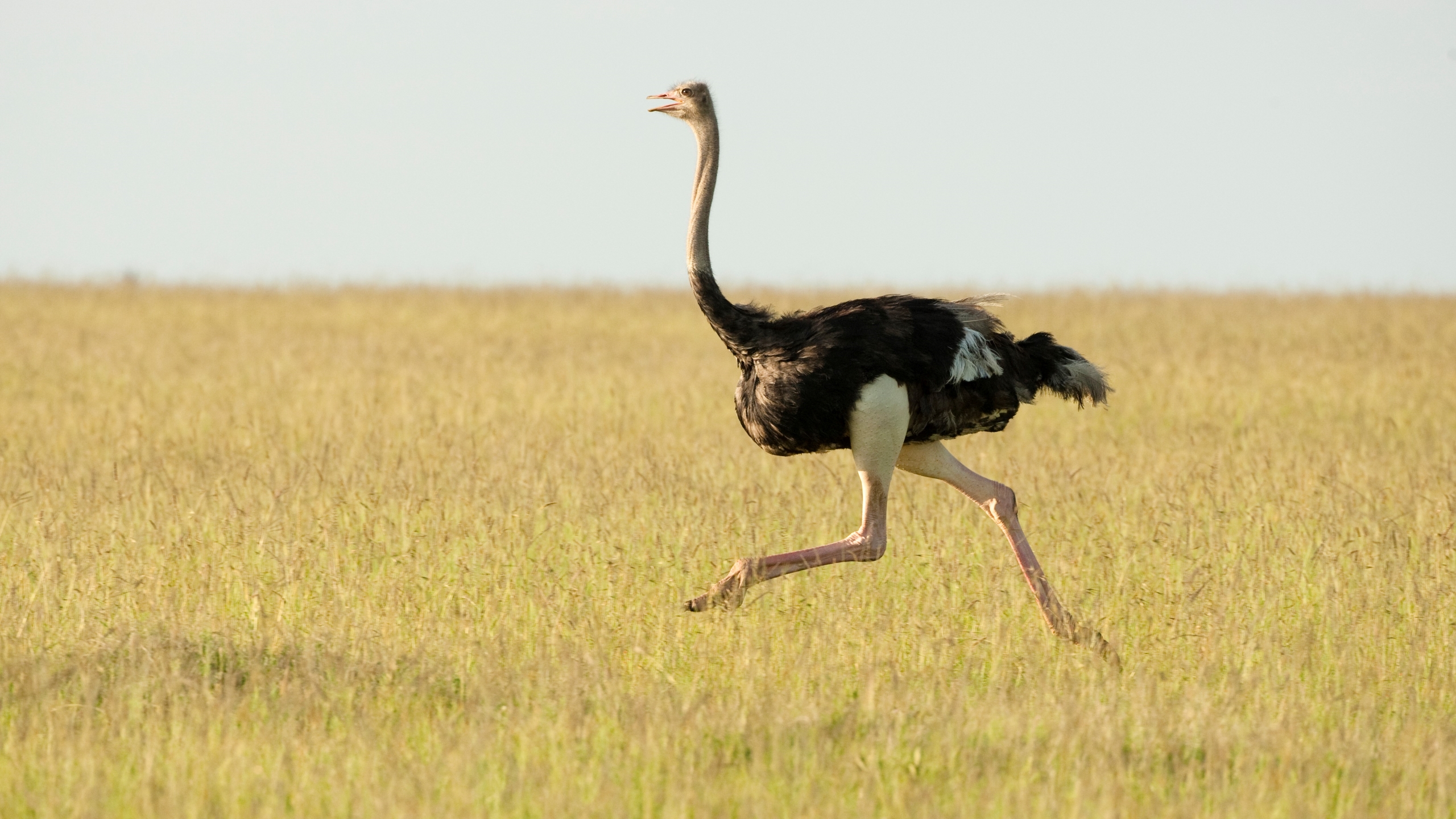
Ostriches (opens in new tab) (Struthio camelus) are the largest birds on Globe (opens in new tab) and the fastest birds on the ground, but they don't fly. They use their long, powerful legs to stitch to 43 mph (70 km/h) in short bursts, according to the San Diego Zoo (opens in new tab). Ostriches grow upwardly to 9 feet (2.7 meters) tall and can embrace 10 to 16 feet (3 to 5 m) in a single stride. These giant birds use their quickness to escape danger, including predators such as lions (opens in new tab) (Panthera leo).
Ostriches live in semi-barren plains and woodlands in Africa, including countries such as Mauritania and Senegal in western Africa; Somalia and Tanzania in eastern Africa; and Republic of zimbabwe and S Africa in southern Africa, co-ordinate to the African Wild fauna Foundation (opens in new tab).
Related: Extinct 11-foot 'super-ostrich' was every bit massive as a polar bear (opens in new tab)
Pronghorn: 60 mph (97 km/h)
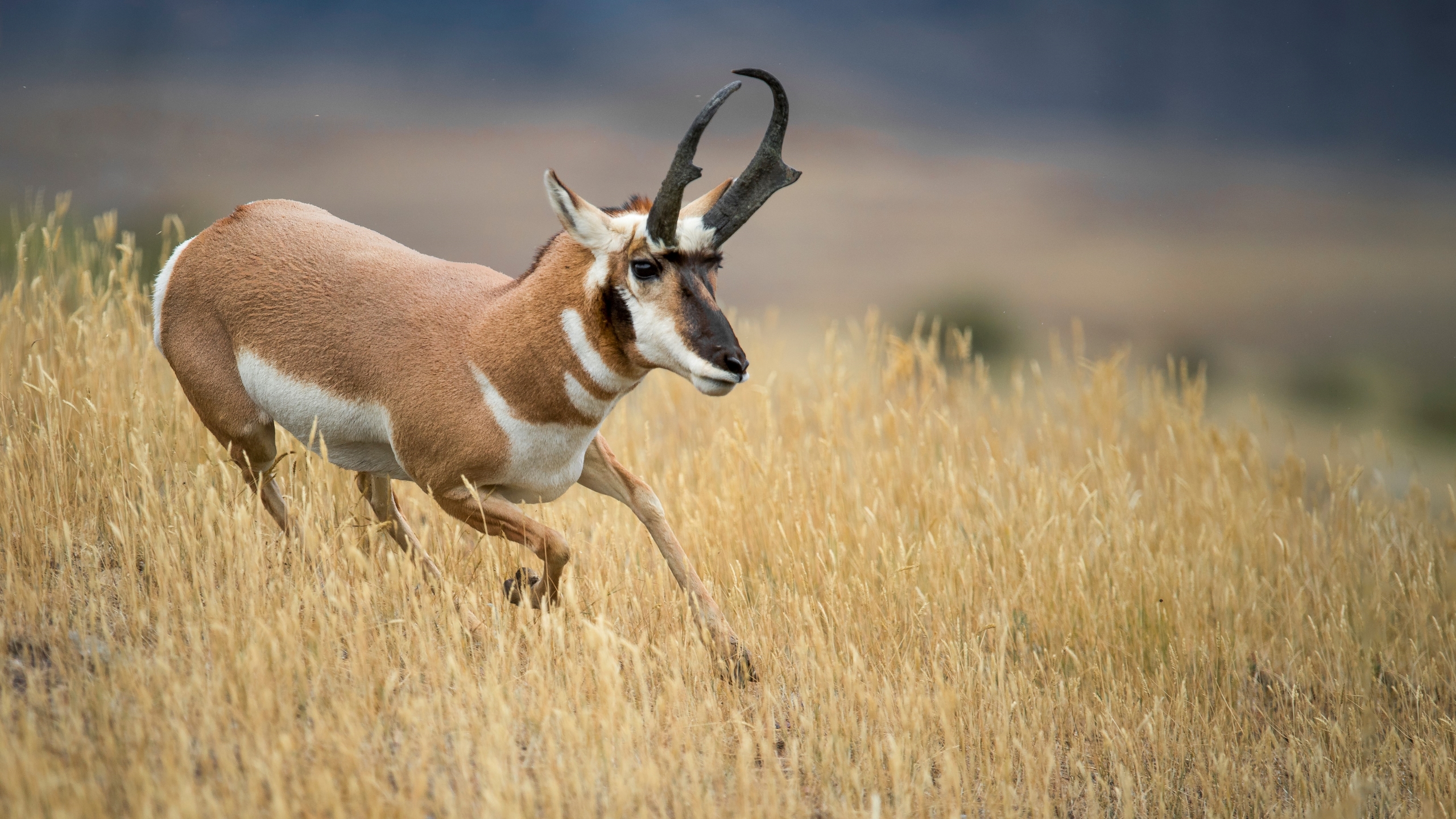
Pronghorns (Antilocapra americana) are small, hoofed mammals from Northward America that tin can hit elevation speeds of up to sixty mph (97 km/h), according to Barnyards & Backyards (opens in new tab), a magazine partnered with the University of Wyoming. This means pronghorns are the second fastest beast on land.
In that location aren't any predators that tin can reach shut to that speed in Due north America today, but these swift antelope relatives evolved alongside at present-extinct American cheetahs, which the pronghorns needed to outrun in order to survive, according to the U.S. Fish & Wildlife Service (opens in new tab). Pronghorns in Wyoming may undertake migrations that can bridge 300 miles (483 km) in search of food, according to the National Wildlife Federation (opens in new tab).
Chetah: lxx mph (112 km/h)
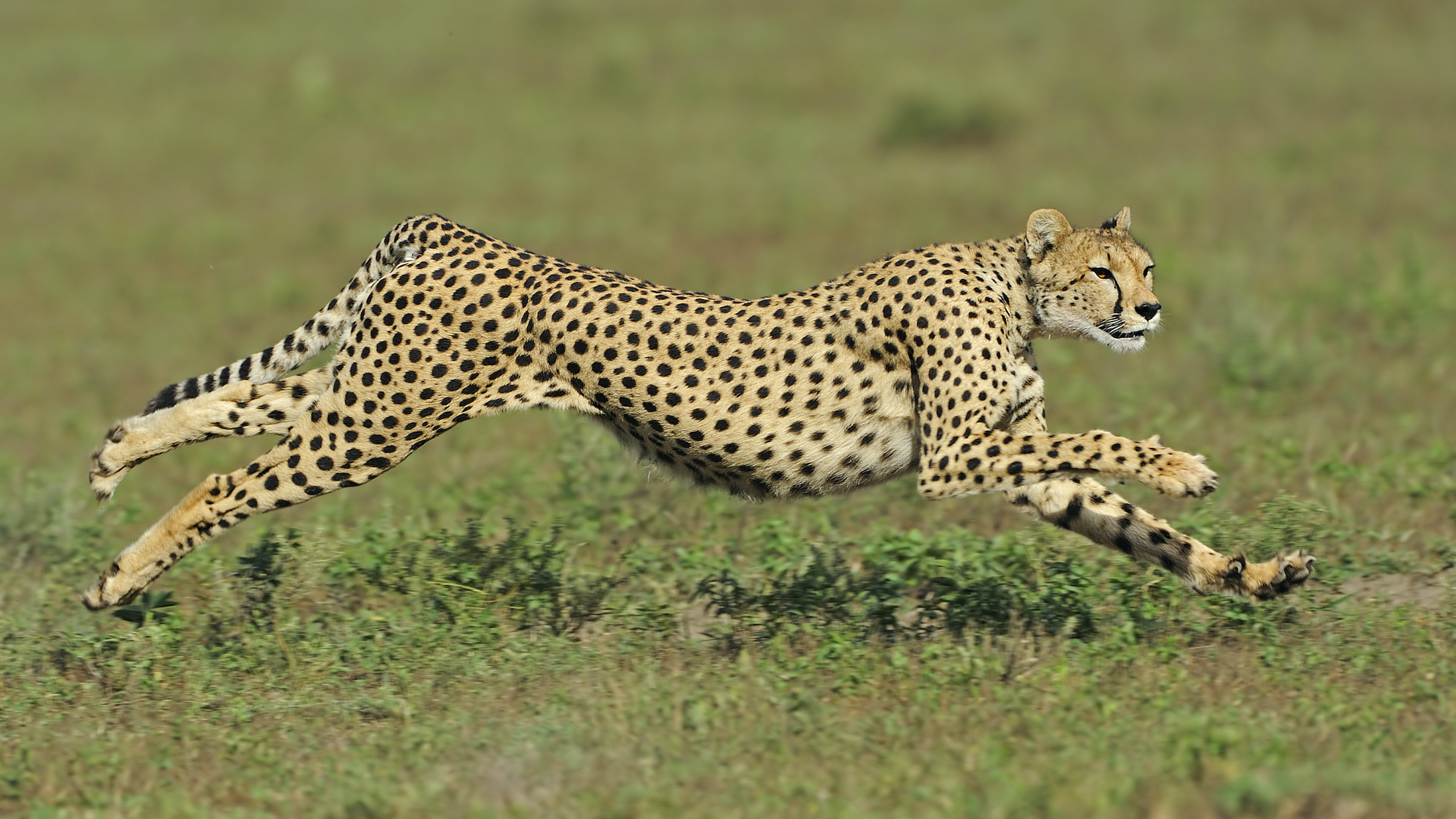
In the fauna Olympics, cheetahs (opens in new tab) (Acinonyx jubatus) would dominate the sprinter races. These big cats are the fastest land animals and are capable of running at a top speed of lx to seventy mph (96 to 112 km/h). I cheetah from the Cincinnati Zoo named Sarah was recorded running the 100-meter dart in 5.95 seconds, Live Scientific discipline previously reported (opens in new tab). The fastest human ever, Olympic runner Usain Commodities, holds the world record for running the same altitude in ix.58 seconds. During this sprint in 2009, he reached a top speed of 27.8 mph (44.7 km/h), co-ordinate to the Olympics (opens in new tab) website.
Cheetahs live in northern, eastern and southern Africa, with a small population in Iran in Asia. They have long, slender bodies and powerful legs to assist them reach their tiptop speeds then they tin chase down speedy prey, such as gazelles (opens in new tab).
Related: The secret to cheetahs' speedy stride found (opens in new tab)
Fastest animals in water
Sailfish: xix to 68 mph (30 to 110 km/h)
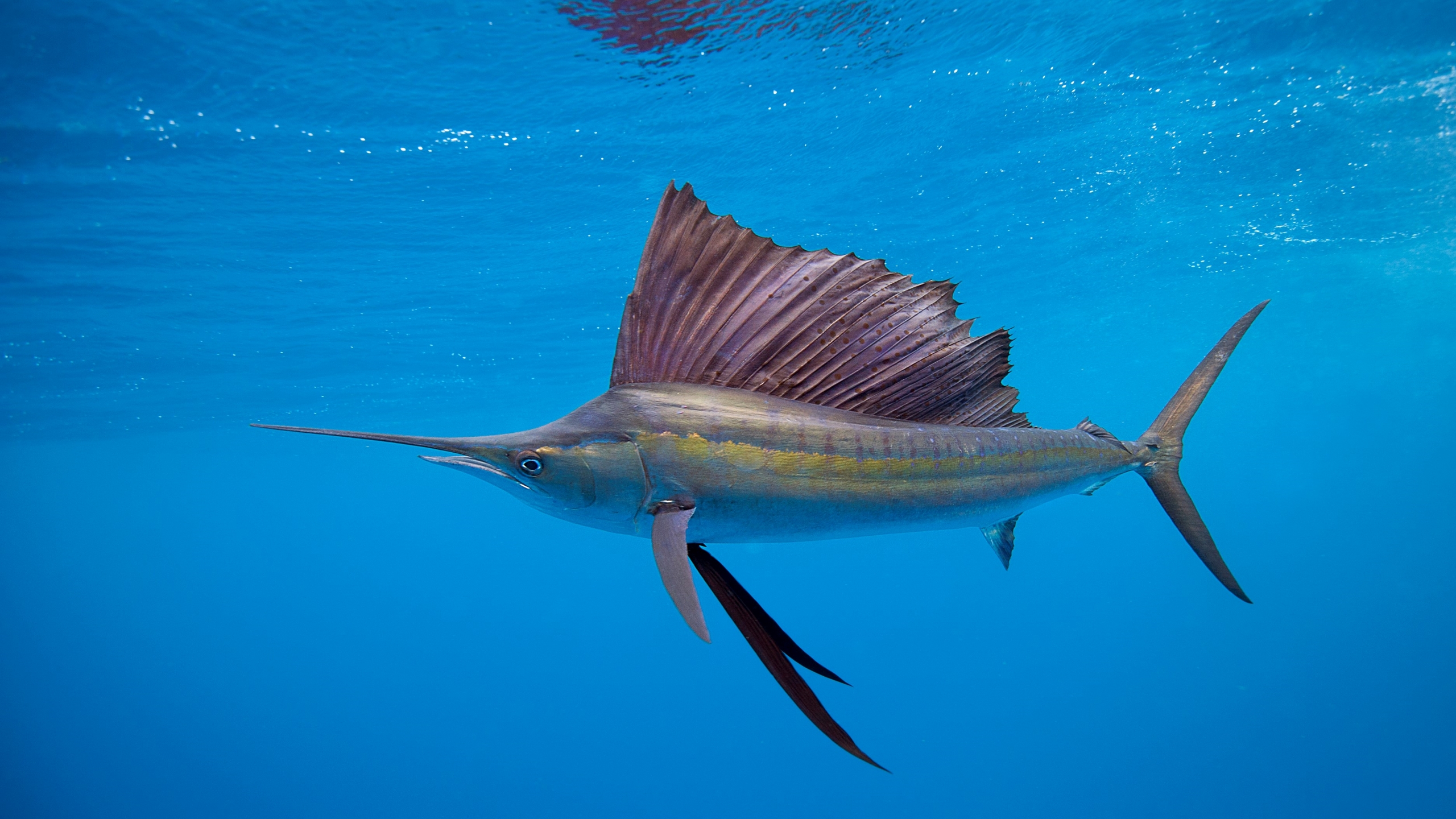
Sailfish (Istiophorus) are a group of fish that scientists often consider to exist the fastest fish in the ocean, with a reported top speed of more than 68 mph (110 km/h), according to the National Oceanic and Atmospheric Assistants (opens in new tab) (NOAA). However, some experts believe these large fish are actually much slower. Paolo Domenici, a biologist at the Italian National Research Council's Institute of Biophysics (IBF), has doubts well-nigh sailfish and other marine animals swimming over 62 mph (100 km/h). According to Domenici, the widely cited sailfish elevation speed comes from a Land Life magazine article published in 1941, which isn't a scientific journal, making the data questionable.
"Equally of now, there isn't really a very articulate measure out of the fastest speed in potentially fast fish," Domenici told Live Science. He and his colleagues used tags and videos to measure out sailfish tail-beat out frequencies — the fish equivalent of stride lengths — to calculate how fast they may exist able to travel. "When we did that we concluded up having at most something around 8 to ten meters per 2d [18 to 22 mph, or 29 to 36 km/h], not much higher than that," he said. Domenici co-authored a 2016 study published in the journal Biology Open (opens in new tab) that estimated the maximum swimming speed for sailfish is but about 19 mph (30 km/h).
Related: Sailfish stealthily slash prey with bills (opens in new tab)
Swordfish: 22 to 62 mph (36 to 100 km/h)
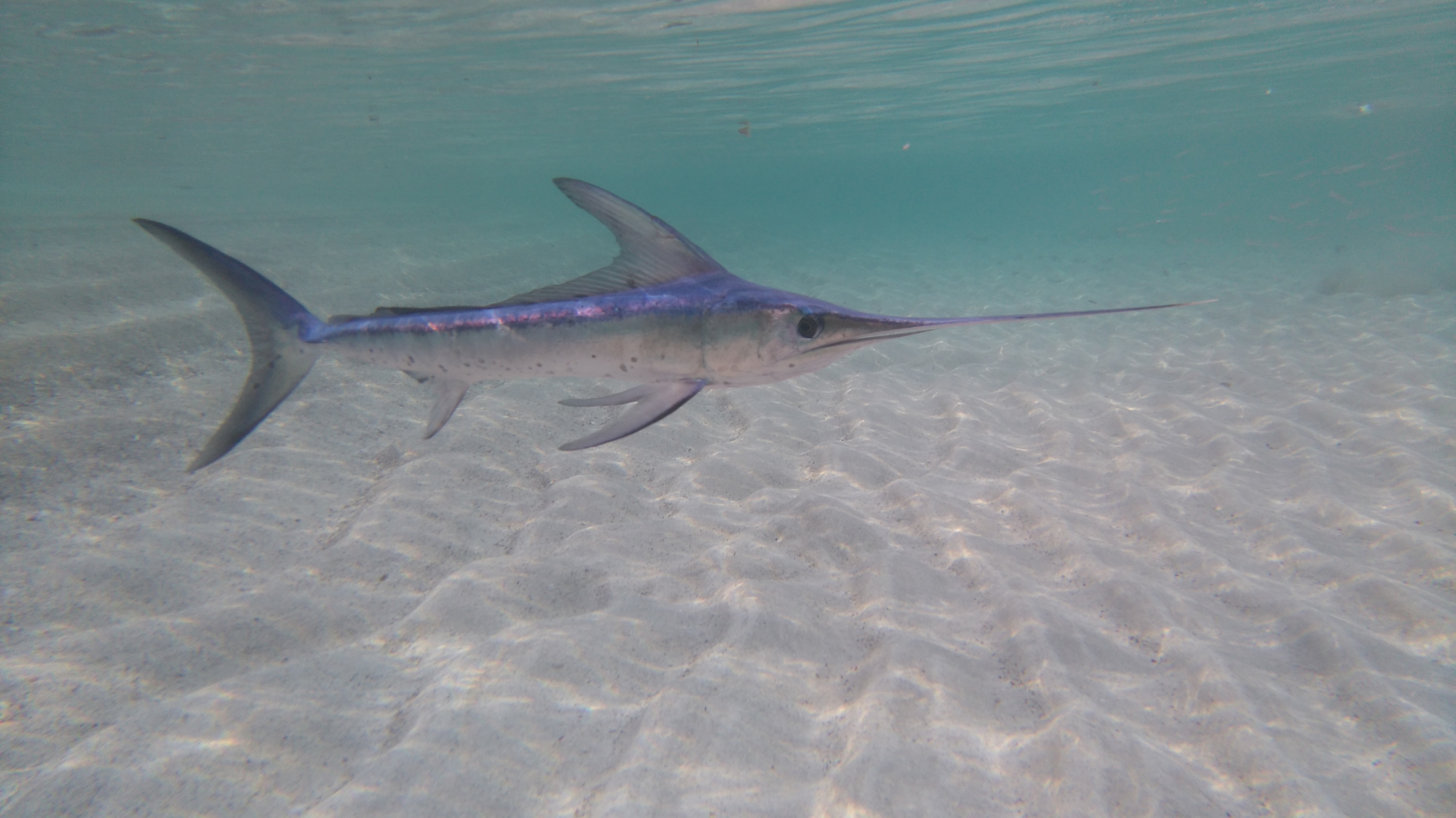
Swordfish (Xiphias gladius) are too contenders for the title of fastest pond animal, with an estimated top speed of over 62 mph (100 km/h). Withal, this effigy comes from Russian inquiry translated into English language and published in the early 1960s. The descriptions for how the swim speed was measured are non very clear or reliable, according to Domenici.
A 2007 study published in the Journal of the Royal Gild Interface (opens in new tab) suggests that over 62 mph may be well beyond the physical limits of whatsoever fish or cetacean (porpoises, dolphins and whales). The researchers found that bubbles created past the animals while swimming can collapse on their fins and may cause damage if they travel faster than 10 to 15 meters per second, or 22 to 34 mph (36 to 54 km/h). In other words, these speeds may be about as fast equally animals can swim in water because they would hurt themselves by traveling faster.
Domenici thinks swordfish could nonetheless be the fastest fish in the ocean, despite likely not being able to travel much faster than 22 mph. The fish use their swords and large, streamlined bodies to reduce drag and streak through the water. Swordfish likewise secrete oil from pores on their heads to create a lubricating oil layer that may farther reduce drag and increase their swimming efficiency, according to a 2016 study published in the Periodical of Experimental Biological science (opens in new tab).
Dall'southward porpoise: 34 mph (54 km/h)
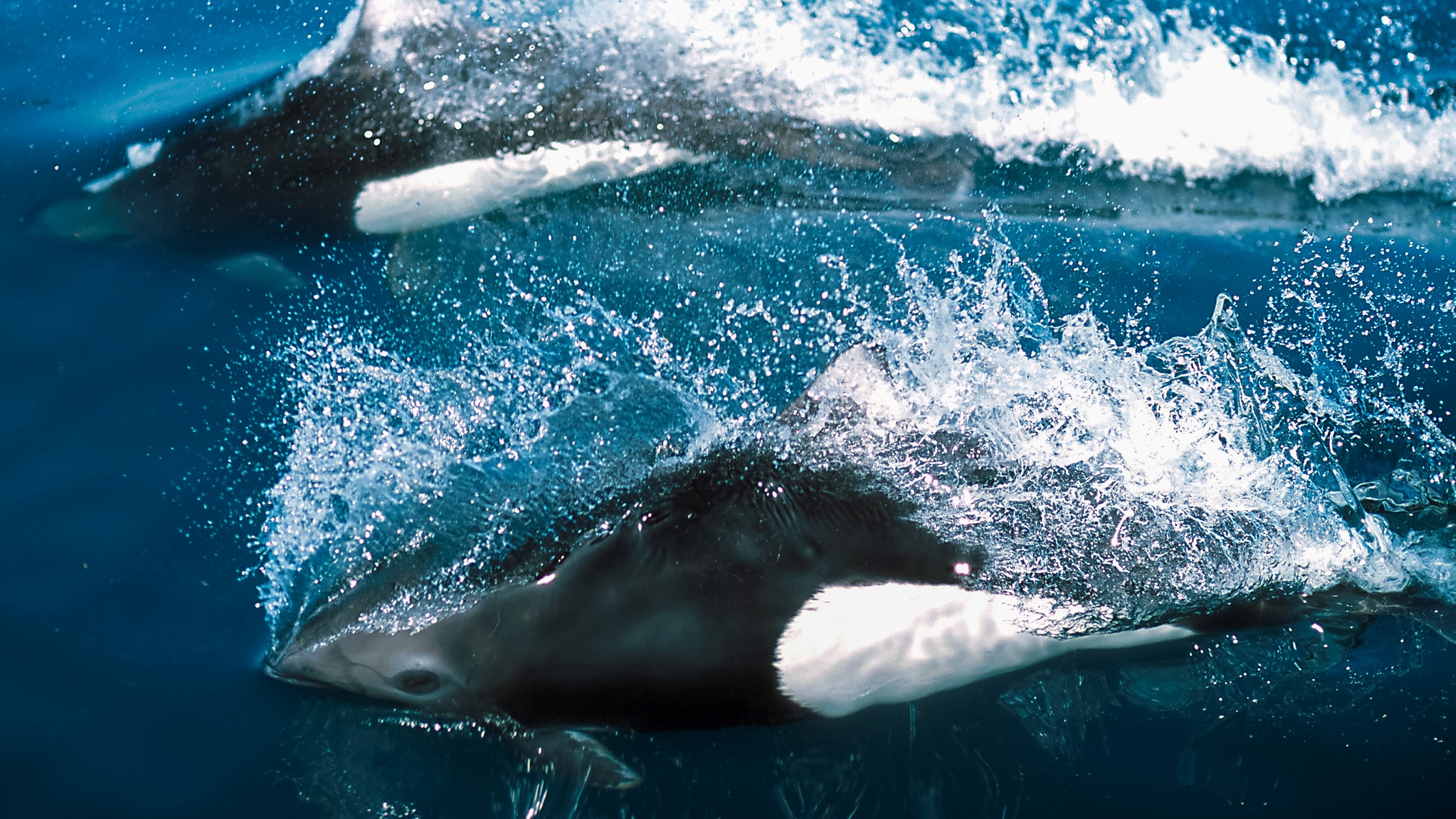
Dall'due south porpoises (Phocoenoides dalli) speed through the water at up to 34 mph (54 km/h), co-ordinate to Whale and Dolphin Conservation (opens in new tab) (WDC), a wildlife charity that focuses on cetaceans. Most porpoises are shy and avert boats, but Dall's porpoises seek them out to ride their bow waves, The bow moving ridge is created at the front of a boat and pushes animals that are riding the wave forrad, which can help them swim faster than they would normally, according to Domenici.
Dall's porpoises live in the common cold waters of the North Pacific Ocean, according to NOAA. Porpoises (opens in new tab) are a separate group of marine mammals to dolphins, which have longer bodies and elongated beaks, or mouths. Orcas (opens in new tab) (Orcinus orca), the largest members of the dolphin family, may also be able to accomplish speeds of 34 mph in front of a boat. This is the aforementioned speed every bit the upper limit in the 2007 study mentioned above, before animals may commencement damaging themselves.
Related: Ii-headed conjoined porpoises hauled up from the deep (opens in new tab)
Fastest animals in the sky
Brazilian free-tailed bat: 100 mph (160 km/h)
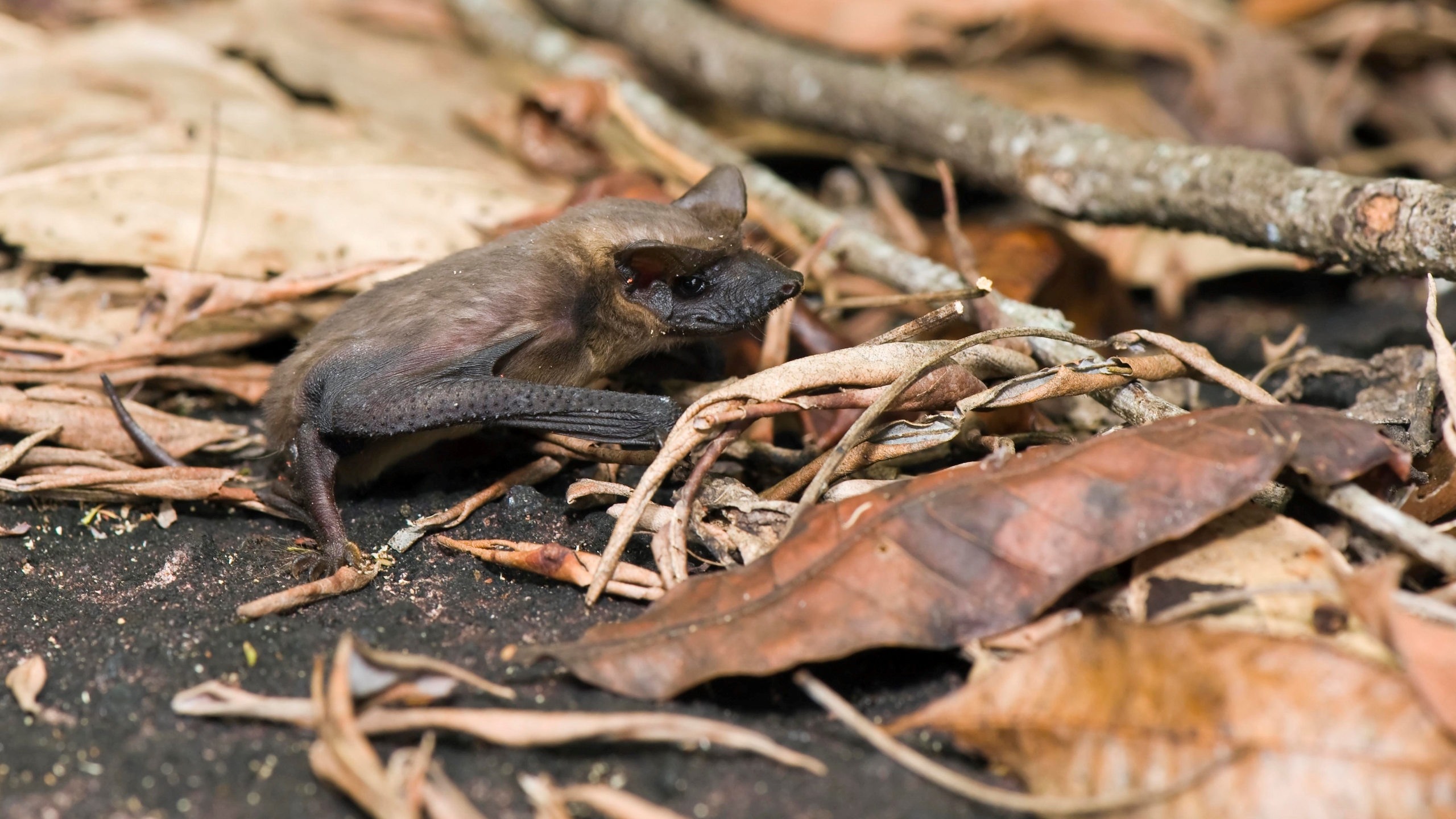
The fastest-flight animal on record is not a bird merely a mammal. A 2016 study published in the journal Royal Society Open Scientific discipline (opens in new tab) clocked Brazilian free-tailed bats (Tadarida brasiliensis) flying upward to 44.5 meters per second, or 100 mph (160 km/h). The report tracked female person bats that weighed around just 0.4 ounce (11 to 12 grams).
Some experts believe that white-throated needletails (Hirundapus caudacutus), members of the swift bird family, can fly fifty-fifty faster, at 105 mph (169 km/h). Merely this has never been proven scientifically, co-ordinate to the National Audubon Society (opens in new tab), a nonprofit conservation system that focuses on birds and their habitat.
Brazilian free-tailed bats aren't simply found in Brazil, as their proper noun suggests. They range from Argentina and Chile in South America, through Central America and into the U.s., including Oregon and Ohio, according to the International Union for Conservation of Nature (opens in new tab) (IUCN). The tiny bats tend to roost together in big numbers at but a few roost sites, which makes them vulnerable to human disturbance and habitat devastation, according to the Texas Parks and Wildlife Section (opens in new tab).
Aureate hawkeye: Almost 200 mph (322 km/h)
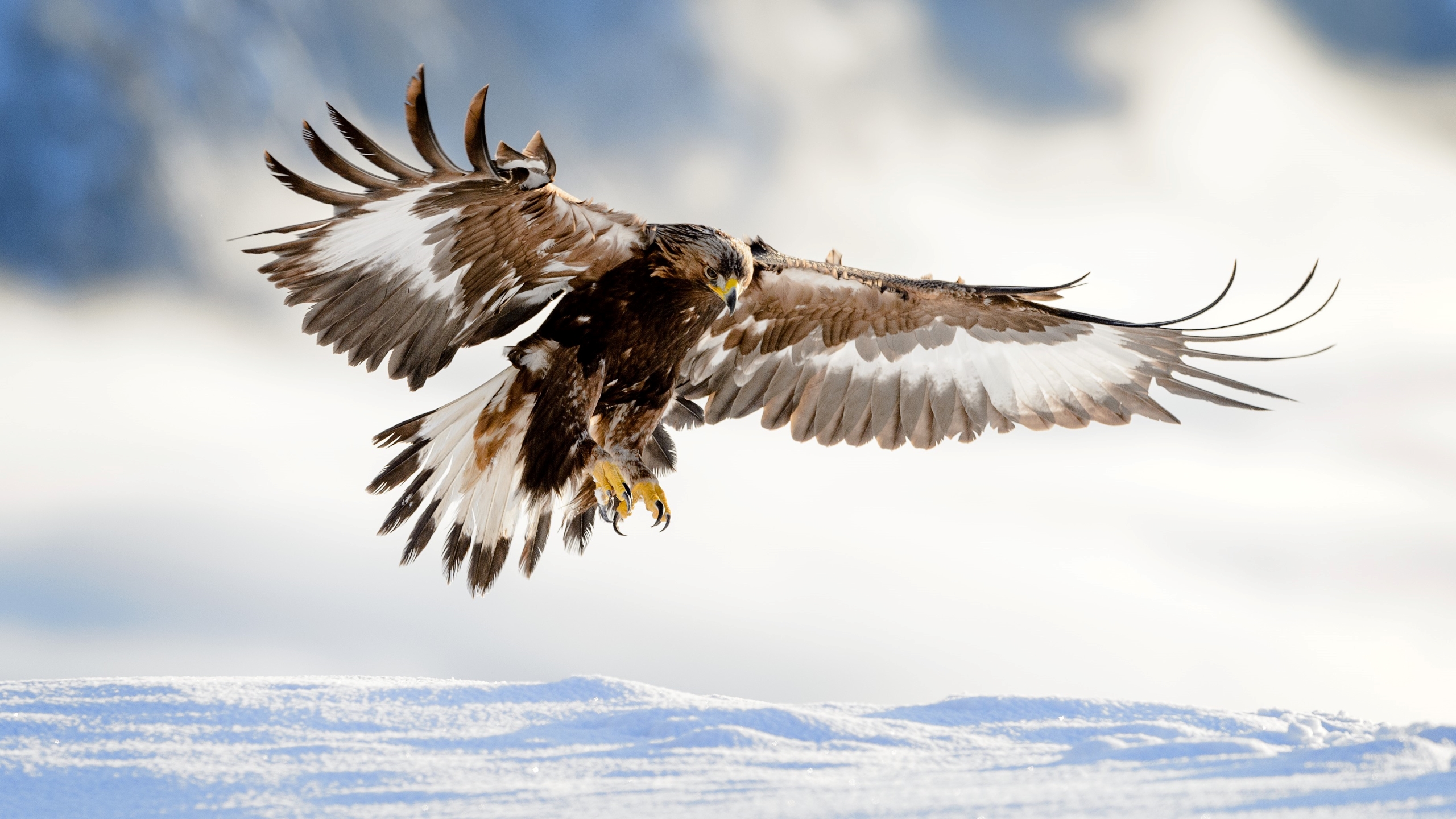
Gilded eagles (Aquila chrysaetos) are among the largest birds in North America, with wingspans reaching more than 7 feet across (220 centimeters). They fly speedily despite their big size, but their top speeds are reached during aerial dives. They tin can zoom through the air at almost 200 mph (322 km/h) when diving from great heights, according to the Cornell Lab of Ornithology (opens in new tab), which is part of Cornell University in New York. Gold eagles dive afterwards prey, every bit well as during courtship rituals and play. Their habitat range stretches across the northern hemisphere, including North America, Europe, Africa and Asia, co-ordinate to the IUCN (opens in new tab).
Related: Rare golden eagle tracked through migration (opens in new tab)
Peregrine falcon: 220 mph (354 km/h)
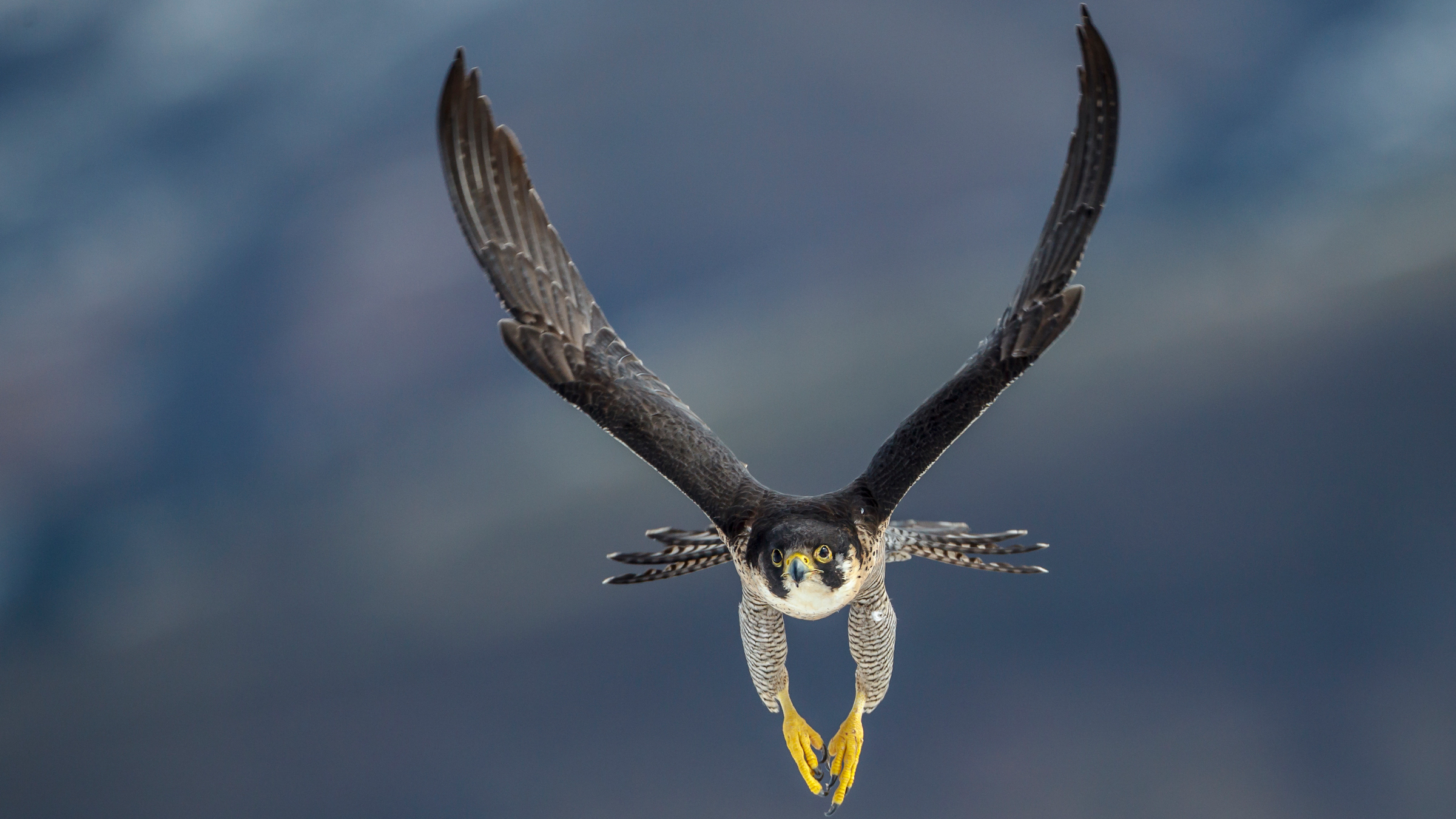
Peregrine falcons (Falco peregrinus) are the fastest animals in the globe and tin reach speeds of upwardly to 220 mph (354 km/h) when diving through the air as they hunt other birds. Their regular cruising speeds range between forty and sixty mph (64 to 97 km/h). According to a Boston University bio-aerial locomotion blog (opens in new tab), these falcons are adapted for speed with pointed, streamlined wings, a modified breastbone for powerful muscle attachments and stiff feathers that reduce drag. Peregrine falcons can be found all over the earth and on every continent except Antarctica, according to the National Wild animals Federation (opens in new tab).
This article was originally written by Live Science contributor Stephanie Pappas and has since been updated.
Source: https://www.livescience.com/59822-fastest-animals.html
Posted by: walkeryety1964.blogspot.com

0 Response to "Is There A Sequel To Kenji World's Mightiest Disciple Anime"
Post a Comment